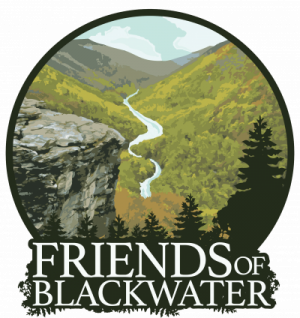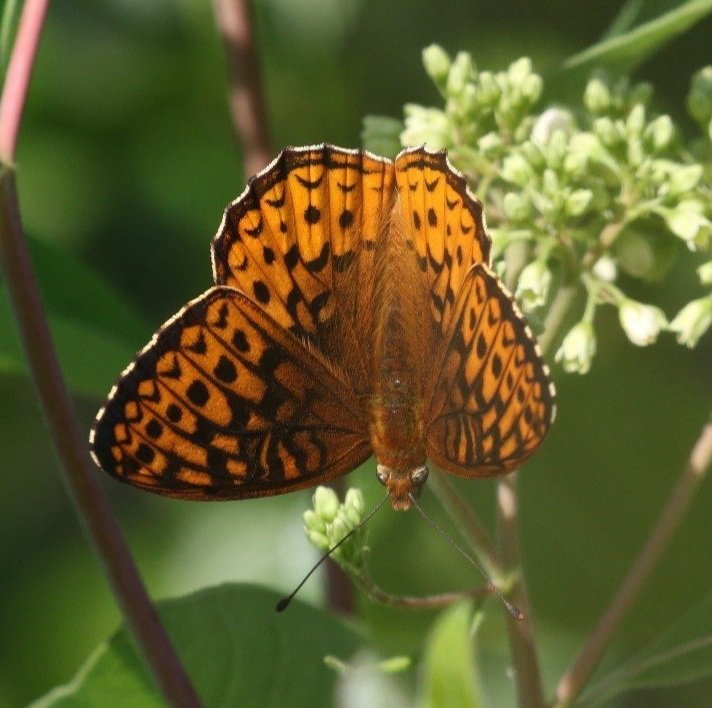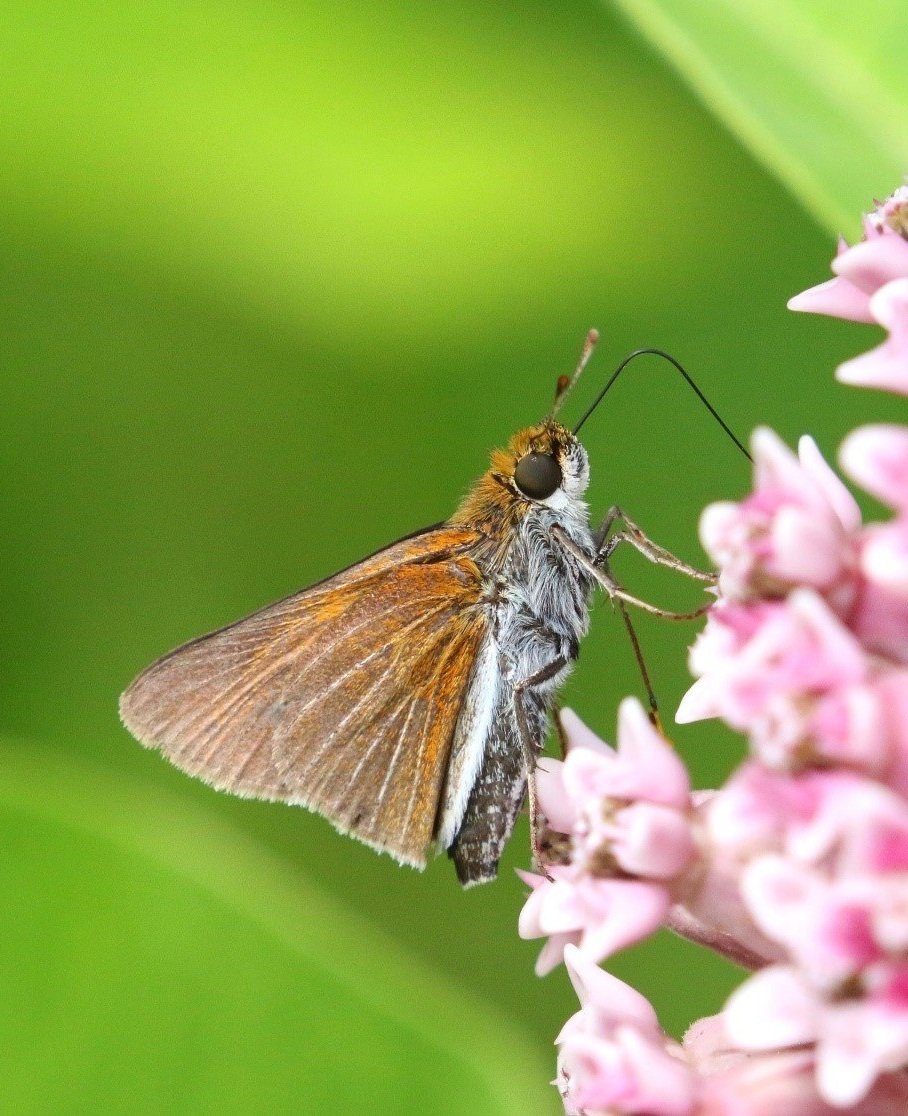
Lepidoptera
(Order)
Butterflies, Moths, & Skippers
Butterflies
Appalachian Tiger Swallowtail
Papilio appalachiensis
Described within the last 20 years, this species is one that drifts along mountain streams and through the opening of deciduous broadleaf forests from the high to mid elevations around the Blackwater watershed. The Appalachian Tiger is one of the largest butterflies in our area and are separated by the similar Eastern Tiger Swallowtail by its larger size and by the continuous yellow band (can be noted in the second photo) known as a submarginal band on the underwing the butterfly. Look for this species nectaring on species such as Mountain Laurel, Common Ninebark, and Rhododendron around the Canyon and can be seen on wildflowers such as Dame’s Rocket along the Blackwater Rail Trail. Also look for this species puddling with other swallowtails as they sip moisture from around mud puddles such as salts and minerals that they cannot get from nectaring on flowers.
Atlantis Fritillary
Speyeria atlantis
A species that was unbelievably common along the Rail Trail was the Atlantis Fritillary, its storm gray eyes contrasting with its orange body and wings. A medium-sized fritillary (2 to 3 inches) compared to that of the larger Great Spangled Fritillary, the most common large fritillary in the region. While the gray eyes are one of the key identifying features also note the darkened veins on the front wing giving this species a much darker look than the other regional fritillaries of similar size. Look for these species flying from June on throughout July. Large numbers were noted along the rail trail paired in sequence to the peak if the blooming of Dame’s Rocket, a nonnative species of flowering herbaceous plant that this species seems to favor. Another food plants adults can be found nectaring on include milkweeds, dogbanes, ox-eye daisy, mountain laurel, as well as others. The species overwinters as a larva, with their host plant being a variety of violets. Eggs are laid singly on leaf litter near host plant.
Harris's Checkerspot
Chlosyne harrisii liggetti
Fluttering around the higher elevation meadows, wetlands, and woodland clearing of Tucker County, the Harris’s Checkerspot is a smaller butterfly (1 ¼ to 1 ¾ inches in wingspan) that can be spotted by its rich orange in base color with wide black borders. The smaller and more commonly distributed Pearl Crescent lacks the heavy black pattern that sets off the orange and white on the underwing, as well as having two of the “pearls” on the string of pearls that runs along the bottom half of the upperwing filled with white. The heavy black pattern that is set off by the orange and white on the underwing creates the namesake “checkerspot” patterning on the Harris’s Checkerspot. Look for adults puddling in search of moisture and nutrients on mud and dung and nectaring on ninebark, dogbanes, and other flowering shrubs and herbaceous plants. This species flies for around a month from early June through early July. This species uses Flat-topped White Aster as a host, with the larva feeding on this plant before overwintering as a half-grown caterpillar in the leaf litter at the base of its host plant. This species can be seen sparely along the rail trail, but its stronghold in the region are the open meadowlands and wetlands of Canaan Valley.
Appalachian Brown
Satyrodes appalachia
Named after the oldest mountain range in the world, this brown satyr-like butterfly jaunts around the areas surrounding the wetlands and glades of the Blackwater watershed. Often found puddling in search of nutrients and minerals on the roads and trails, this species’ count of 10 eyespots is only similar to the Northern Pearly-eye in our region. It can be separated by noting the lower side of forewing with the two end eyespots larger than the middle two and having spots that may not touch. Males can be found patrolling areas in search of females, occasionally teeing up and surveying from a sunlit branch. The eyespots on this species as well as other butterflies serve the purpose of imitating predators. They attempt to do this by hoping to convince the predator who is eyeing up the butterfly that it is looking at a larger set of eyes, thus something that could predate it, and lead it to be the one to scurry away. While this species does not often sit spread-winged, it also is patterned with several eyespots, mostly limited to the hindwing. This species uses sedges as a host plant in our area and rears two broods meaning two flights occur in our region with this species flying from June to September with a few individuals potentially lingering into October. Caterpillars feed on leaves at night and hide at the base of the plant during the day and overwinter as caterpillars. Though the brown coloration might not immediately warrant attention, the patterning and life history of this wetland associated butterfly certainly does.
Two-Spotted Skipper
Euphyes bimacula
Skippers are one of the groups that butterfliers often try to stray themselves from, often how birders attempt to do with shorebirds or “fall” warblers, but it is something that once you give into, opens a door to seemingly endless possibilities and an increased chance to find something that many people chose not to bother with. Two-spotted Skipper is one of these great finds! Thought to have been extirpated from both West Virginia and Maryland due to destruction and degradation of wetlands this species was rediscovered in both states in the summer of 2022 by our own field biologist, Aaron Graham. This species can be identified from other skippers when closed by having a distinctive sun-blazened orange with a white anal fold that borders the bottom half of the wing, essentially creating a white line across the bottom of the wings that appears to separate the wings from the body. No other skipper in our region has this feature. As this species begins to wear from being exposed to the elements, the orange coloration can fade to a dusty brown, but this white anal fold remains and can still be used as a staple piece to making this identification. Though my interactions with this species have led me to note that they do not spread their wings to sun as most skippers do, they still do it and have certain field marks that be used to identify them in this positioning as well. Females display the namesake two-spotted marking in the middle of the forewing. The underside of both the head and the body are a powdery white as well. This species can be found in marshes and wet meadows and can be found on roads bordering these habitats where they would come to seek nutrients and minerals from mud or dung. I have noted this species nectaring on Viper’s Bugloss and Common Milkweed in our region. Look for this species to be on the wing from mid-June through July. Around the Blackwater watershed this species utilizes Tussock Sedge (Carex stricta) as a host plant. The caterpillars of this species feed on the leaves of the sedge at night and hide at the base of the plant during the day. This species overwinters as a caterpillar. Hopefully this inspires others to look at skippers, however minuet in size.
Citations
Atlantis Fritillary — Speyeria atlantis. Montana Field Guide. Montana Natural Heritage Program. Retrieved on July 18, 2022
Butterflies and Moths of North America: Collecting and sharing data about Lepidoptera. Butterflies and Moths of North America | collecting and sharing data about Lepidoptera. (2022, July 17). Retrieved July 18, 2022, from https://www.butterfliesandmoths.org/
Reese, M. (n.d.). Insect guides. Home - wisconsinbutterflies.org. Retrieved July 18, 2022, from https://wisconsinbutterflies.org/









